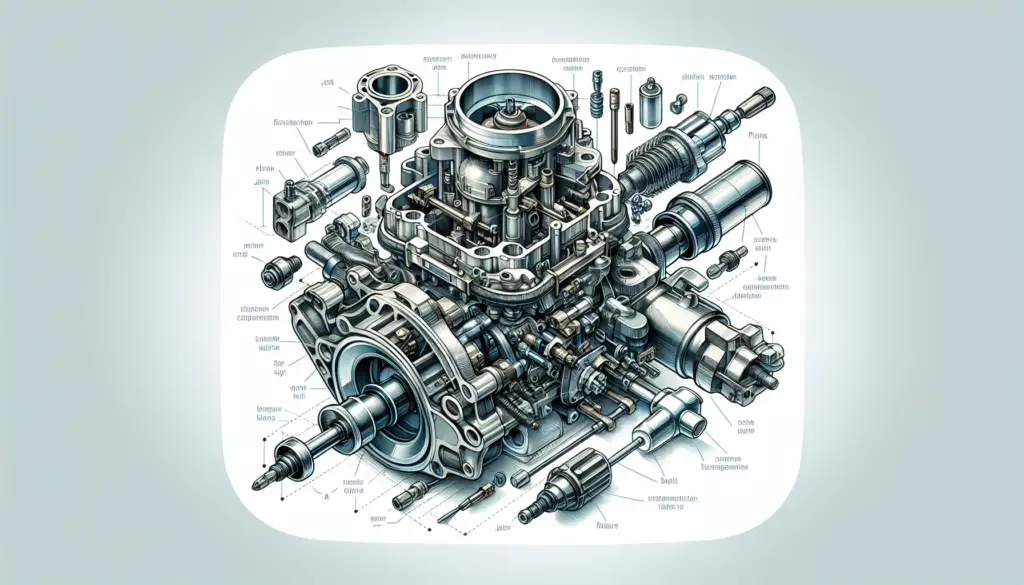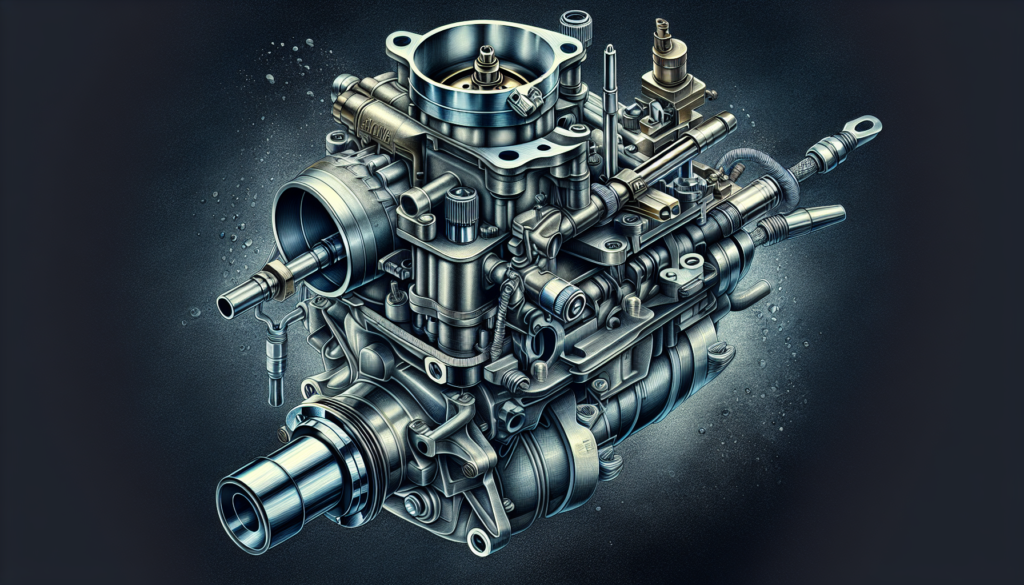Strolling through “Understanding Boat Engine Carburetor Problems”, you’re about to embark on an enlightening journey that will enlighten your knowledge about this vital boat component. Giving your vessel the ‘oomph’ to glide across waterways, the carburetor definitely plays a key role. However, its functionality can sometimes be marred by unsuspected issues. Just like a seasoned sailor reading the unpredictability of the tides, this article assists you in diagnosing and troubleshooting your boat’s carburetor problems. By the end of this read, you’ll have become the capable captain of your craft, ready to tackle any unexpected engine problems in your path.

Overview of a Boat Engine Carburetor
A boat engine carburetor is an essential component that determines how your boat performs on the water. Its primary role is to mix the right amount of gasoline with air so that the engine runs properly.
Understanding the function of a boat engine carburetor
The primary function of a carburetor in a boat engine is to maintain the correct ratio of fuel and air mixture for combustion. It precisely controls this ratio to ensure that the engine receives the right amount of fuel mixture for efficient burning.
Key components of a carburetor
Some fundamental parts of a carburetor include the throttle plate, float, jets, and needles. The throttle plate controls the amount of air entering the carburetor, the float determines the fuel level in the carburetor, the jets aid in fuel supply, and the needles regulate the level of fuel in the float bowl.
How a carburetor works in a boat engine
A carburetor operates on a relatively simple basis. As air enters the carburetor, it’s mixed with fuel supplied by the jets. This air-fuel mix is then sent to the combustion chamber where it’s ignited by a spark from the spark plug. This triggers a combustion process that powers the engine.
Common Boat Engine Carburetor Problems
Even with the best maintenance routines, carburetor problems are relatively common, leading to performance issues with your boat engine.
Dirty Carburetor
A dirty carburetor is a common issue with boat engines. Over time, dust, debris, and residue from evaporated fuel can accumulate, leading to clogged passages and affecting the air-fuel mixture ratio.
Carburetor Flooding
Carburetor flooding happens when excessive fuel enters the carburetor, preventing it from functioning effectively. This can be caused by a faulty float or improperly adjusted float setting.
Clogged Carburetor Jets
Clogged jets can disrupt fuel flow to the engine, causing problems with starting or running the engine. Jets can be clogged by dirt, debris, or, most commonly, the residue from evaporated fuel.
Worn Out Needles and Seats
If the needles and seats of the carburetor are worn out, they can affect the exact fuel flow needed for smooth running of the engine, resulting in various issues like flooding or erratic engine performance.
Causes of Carburetor Problems
Carburetor problems in boat engines can be nicked to various factors.
Poor maintenance routine
Lack of regular maintenance can have a detrimental effect on your boat engine carburetor’s performance. Without regular cleaning and checkups, dust and dirt can accumulate, clogging the small passages and jets in the carburetor.
Use of incorrect fuel type
In other circumstances, using incorrect or low-quality fuel can lead to deposits and buildup in your carburetor. Over time, these deposits can cause clogs and disrupt your engine performance.
Prolonged periods of inactivity
Your boat engine may also encounter carburetor problems if it’s inactive for an extended period. Fuel left in the carburetor can evaporate, leaving a thick, gummy substance that hinders operation.
Environmental factors
Environmental factors, like high humidity and dusty conditions, can also contribute to common carburetor issues such as dirt buildup or rusting.

Symptoms of Carburetor Problems
Carburetor problems exhibit several symptoms that you need to look out for.
Difficulty in starting the engine
If your boat engine takes more effort to start or doesn’t start at all, it could indicate a carburetor problem. The issue could be due to clogged jets or a dirty carburetor.
Poor fuel economy
When the carburetor doesn’t efficiently manage the air-fuel mixture, the engine may consume more fuel than necessary. This can result in poorly performing engine and reduced fuel economy.
Unstable engine performance
You may notice your boat’s engine performance to be unstable, with the engine running rough or stalling at high speeds. This could very much be due to carburetor issues, from a dirty carburetor to worn-out needles and seats.
Black smoke from the exhaust
Black smoke from the exhaust is another indication of carburetor problems. It may suggest a rich fuel mixture, which can be due to a clogged carburetor, a clogged air filter, or a malfunctioning choke.
Diagnosing Boat Engine Carburetor Problems
Before getting to repairs and replacements, you should first diagnose the problem appropriately.
Visual inspection of the carburetor
Start with a visual inspection. Look for signs of leaks, clogs, or buildup of gummy deposits. Being able to identify visual abnormalities can guide your next steps.
Performance test of the engine
You can also perform various engine tests, such as a cylinder compression test, spark test, or vacuum leak test. These can provide more in-depth insight into any potential carburetor or engine issues.
Use of diagnostic tools
There are specific tools available for diagnosing carburetor issues, such as a carburetor pressure gauge. These tools can streamline the troubleshooting process by accurately pinpointing the problem area.
Cleaning a Dirty Carburetor
One of the primary ways to resolve common carburetor problems is to clean it thoroughly.
Safety measures before cleaning
Before cleaning your carburetor, make sure you have the right safety measures in place. This includes using gloves and protective eyewear, and working in a well-ventilated area.
Process of dismantling the carburetor
Start by carefully disassembling the carburetor. Keep track of every part and how it’s oriented to ensure correct reassembly.
Cleaning process for different parts
Now, you move on to cleaning. You can use a commercially available carburetor cleaner and a small brush to carefully clean the jets, needles, float, and bowl. Pay particular attention to any small holes or passageways.
Reassembling the carburetor
Once everything is cleaned, put the carburetor back together by following the steps from the dismantling in reverse. Now, it should be back to operating perfectly.
Repairing a Flooded Carburetor
Just like cleaning, repairing a flooded carburetor is another common procedure tackled by many boat owners.
Identifying a flooded carburetor
A flooded carburetor is characterized by an overly wet spark plug and a strong smell of gasoline. These are clear signs that there’s too much fuel in the combustion chamber, leading to flooding.
Methods to repair carburetor flooding
To repair a flooded carburetor, adjust the float to the correct level to control the fuel supply. Also, check for stuck floats or faulty float needles that can cause flooding.
Preventive measures against flooding
To prevent future instances of carburetor flooding, ensure that the float and float needle function correctly, and are set to the right specifications. Also, perform regular carburetor cleanups to clear any residues.
Fixing Clogged Jets in a Carburetor
Clogged jets are another common issue you may have to deal with in your boat engine carburetor.
Understanding the role of jets in a carburetor
Jets play a vital role in a carburetor by controlling the amount of fuel flowing into the airstream. The jets have tiny orifices that precisely meter the fuel for various operating condition of the engine.
How to identify clogged jets
If your boat engine has trouble starting or stays running, it could be a sign of clogged jets. Also look out for the engine running rich, meaning it’s getting more fuel than necessary.
Detailed process of unclogging jets
To unclog carburetor jets, remove them and clean with a jet cleaner or carburetor cleaner. Avoid any detergents or solvents that might damage the jets. Once cleaned, re-install them and ensure they are calibrated properly.
Carburetor Maintenance Practices
Carburetor maintenance practices ensure that your boat engine runs smoothly and reduces the likelihood of any major carburetor issues.
Routine inspection and cleaning
Regular inspection and cleaning of your boat’s carburetor can go a long way in extending its lifetime.
Regular changing or checking of fuel
Ensure you use high-quality fuel for your boat engine, and remember to check the fuel frequently for any foreign substances or water.
Timely replacement of worn-out parts
As parts like needles, floats, and jets wear out over time, it’s important to replace them timely to keep your carburetor performing optimally.
Usage of high-quality replacement parts
Always use high-quality and compatible replacement parts for your carburetor. Also, remember to set them to the right specifications for your boat engine.
When to replace a Boat Engine Carburetor
Sometimes, despite all the maintenance and cleaning, it might be time to replace the carburetor.
Assessing excessive wear and tear
Assess the condition of your carburetor. If you notice excessive wear and tear or damage that affects performance, it might be time for a replacement.
Repeated unfixable problems
If the same carburetor problems keep emerging despite several repairs, it might indicate that your carburetor needs replacement.
Cost comparison of repair and replacement
Consider the cost factor. If the cost of numerous repairs cumulates to being more than a new carburetor, it makes economic sense to opt for a new carburetor.
Choosing a suitable replacement carburetor
When replacing, choose a replacement carburetor that suits your specific boat engine. Ensure compatibility to guarantee efficient performance. A new carburetor will provide your boat engine a new lease of life, enabling you to continue enjoying your time on the water.


[…] Prevention, as they say, is better than cure. Here are some strategies to help prevent common Boat Engine Carburetor Problems. […]